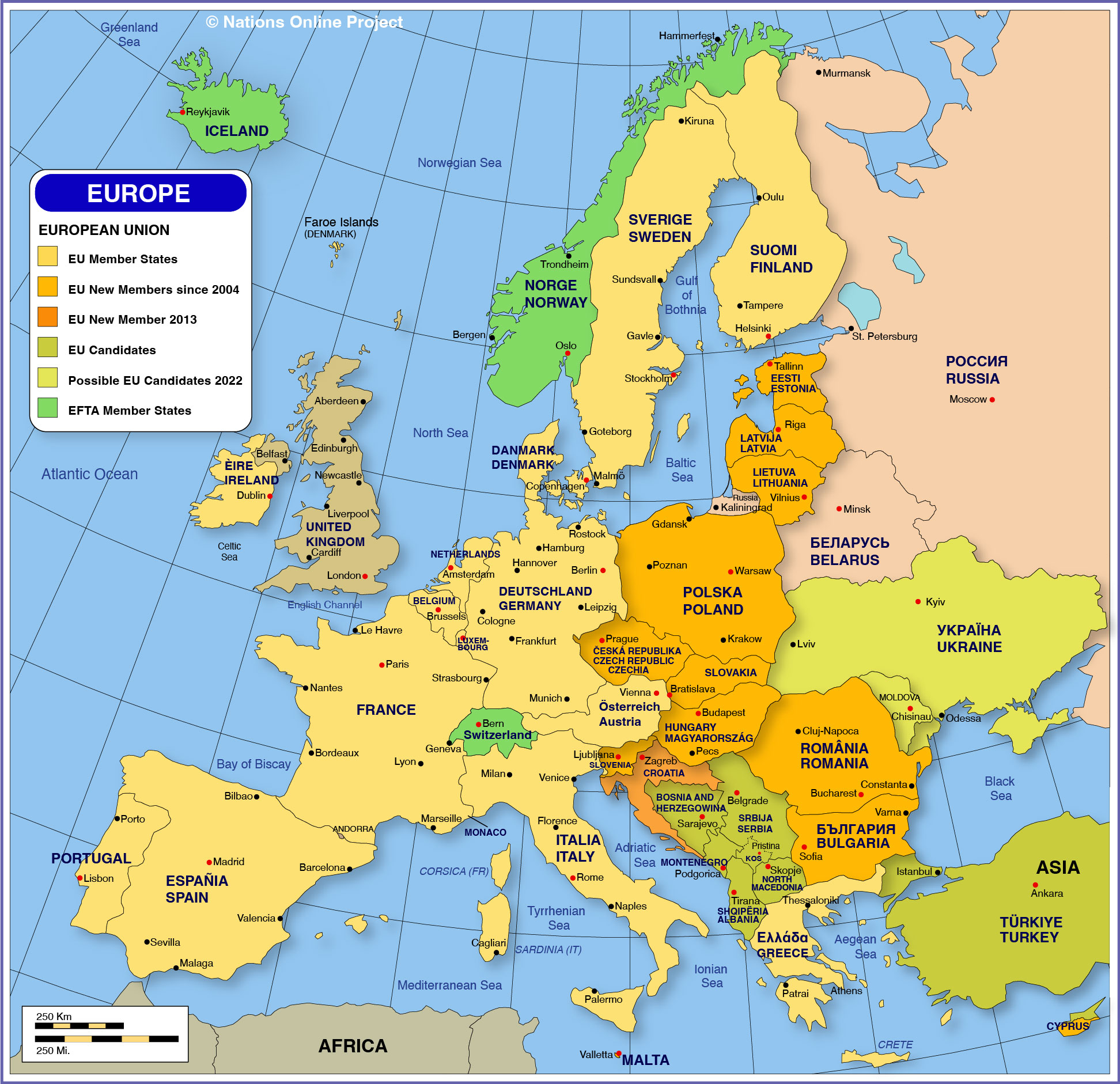
The Beautiful Game’s Blueprint: Unpacking Football’s Global Expansion Strategy Facts
Football, or soccer as it is known in some parts of the world, transcends mere sport; it is a global phenomenon, a cultural touchstone, and an economic powerhouse. Its unparalleled reach, captivating billions of fans across every continent, is no accident. It is the result of a meticulously crafted, multi-faceted global expansion strategy, executed over decades by governing bodies, leagues, clubs, and commercial entities. This article delves into the factual underpinnings of this strategic blueprint, exploring the key pillars that have propelled football from its European heartland to become the planet’s most beloved and commercially successful sport.
I. The Primacy of Media Rights: Billions and Beyond
The bedrock of football’s global expansion strategy is undoubtedly the aggressive monetization and distribution of its media rights. The sheer scale of these deals is staggering and provides the financial muscle for further investment.
- Fact 1: Exponential Growth in Broadcast Revenue: The English Premier League, arguably the most globally popular domestic league, serves as a prime example. For the 2022-2025 cycle, its international broadcast rights alone are projected to exceed its domestic rights, reaching an estimated £5.3 billion (approximately $6.7 billion USD). This marks a significant increase from previous cycles and highlights the global appetite for top-tier football. Similarly, La Liga, the Bundesliga, and Serie A command substantial international broadcast revenues, with growth rates consistently outstripping domestic figures.
- Fact 2: Diversification of Platforms: The expansion isn’t just about traditional TV. Digital platforms and streaming services have become crucial. Companies like DAZN, Amazon Prime Video, Peacock, and Paramount+ have invested heavily in acquiring rights, making games accessible to new demographics and regions via internet connectivity. This shift allows for more tailored content delivery and reaches audiences who have "cut the cord" from traditional cable.
- Fact 3: Localized Content and Commentary: To truly penetrate diverse markets, rights holders often invest in localized commentary teams and bespoke programming. For instance, a Premier League match broadcast in Indonesia will feature Indonesian commentators, while in Brazil, it will have Brazilian Portuguese analysis. This cultural adaptation enhances viewer engagement and makes the product more relatable.
II. Commercial Partnerships and Sponsorships: The Global Brand Nexus
Beyond media rights, a robust network of global commercial partnerships and sponsorships injects vast sums into the football ecosystem, simultaneously amplifying brand visibility.
- Fact 4: Multi-Million Dollar Kit Deals: The partnerships between top clubs and sportswear giants are emblematic. Nike’s deal with FC Barcelona, Adidas’s long-standing relationship with Real Madrid, and Puma’s various agreements with clubs like Manchester City are worth hundreds of millions of dollars annually. These deals not only provide revenue but also transform club jerseys into global fashion statements, extending their reach into retail markets worldwide.
- Fact 5: Strategic Corporate Alliances: Major international brands, from airlines (Emirates, Qatar Airways) to automotive companies (Hyundai, Audi) and financial services (Standard Chartered), strategically align with top clubs and tournaments. These sponsorships often include extensive marketing campaigns in key growth markets, using the universal appeal of football to promote their products and services. For example, Qatar Airways’ sponsorship of FIFA and various clubs significantly elevated its global brand recognition.
- Fact 6: Pre-Season Tours as Marketing Vehicles: Elite European clubs regularly undertake pre-season tours to lucrative markets in Asia, North America, and the Middle East. These tours are not just about match fitness; they are carefully orchestrated marketing events. They involve open training sessions, fan meet-and-greets, local community engagement, and exhibition matches against local teams or other European giants, generating significant ticket sales, merchandise revenue, and media buzz in those regions.
III. International Competitions and Club Globalization: Bringing the Game Closer
Major tournaments and the internationalization of club operations are critical in consolidating football’s global footprint.
- Fact 7: The FIFA World Cup’s Unrivaled Global Audience: The FIFA World Cup remains the pinnacle of football’s global appeal. The 2022 FIFA World Cup in Qatar recorded a cumulative attendance of 3.4 million spectators and was watched by over 5 billion people worldwide across various platforms, with the final alone reaching a global audience of 1.5 billion. This quadrennial event serves as a massive, concentrated marketing blitz for the sport.
- Fact 8: UEFA Champions League’s Pan-Continental Dominance: While a European competition, the UEFA Champions League holds immense global appeal, largely due to its concentration of the world’s best players and clubs. Its final consistently ranks among the most-watched annual sporting events globally, demonstrating the power of elite club competition.
- Fact 9: Expanding Club Presence and Academies Abroad: Top clubs are increasingly establishing official fan clubs, merchandise stores, and even youth academies in foreign countries. For example, Real Madrid and FC Barcelona have numerous academies across Asia, North America, and Africa, serving as talent development hubs and brand ambassadors. This direct engagement fosters loyalty from a young age and builds future fan bases.
IV. Talent Development and Player Migration: The Human Face of Globalization
The movement of players and the investment in talent development are vital components, showcasing the diverse origins of footballing excellence.
- Fact 10: Global Scouting Networks: European clubs, in particular, operate extensive global scouting networks, identifying and recruiting talent from every corner of the world. This has led to a significant influx of players from Africa, South America, and Asia into Europe’s top leagues, enriching the quality of play and expanding fan interest in their home countries. The Premier League, for instance, boasts players from over 100 different nationalities.
- Fact 11: The "Soft Power" of Star Players: Iconic players like Lionel Messi, Cristiano Ronaldo, Neymar, and Kylian Mbappé are global brands in themselves. Their social media followings often exceed those of entire nations, and their transfers generate global headlines and fan migrations. Messi’s move to Inter Miami, for example, dramatically boosted MLS viewership, ticket sales, and merchandise revenue, particularly in the North American market.
- Fact 12: Investment in Youth Development and Grassroots: FIFA’s "FIFA Forward" program, launched in 2016, has invested billions of dollars into football development projects across its 211 member associations. This includes funding for infrastructure, national team programs, and grassroots development initiatives, ensuring a continuous pipeline of talent and broadening participation at all levels worldwide.
V. Digital Transformation and Fan Engagement: Connecting the World
The digital age has revolutionized how football connects with its global audience, moving beyond passive viewership to active engagement.
- Fact 13: Social Media Dominance: Top clubs and players command colossal followings on social media platforms. Real Madrid and Barcelona each boast over 100 million followers on Instagram alone, with players like Cristiano Ronaldo having over 600 million. This direct digital connection allows for real-time engagement, content sharing, and brand building without geographical barriers.
- Fact 14: Esports and Gaming as Entry Points: The FIFA video game series (now EA Sports FC) has sold hundreds of millions of copies globally, serving as a powerful entry point for new fans, especially younger demographics, to learn about clubs, players, and the rules of the game. Esports tournaments based on these games further extend football’s digital footprint.
- Fact 15: Fan Tokens and Blockchain Integration: More recently, clubs have ventured into fan tokens and blockchain technology, offering fans digital assets that provide voting rights on minor club decisions, access to exclusive content, or merchandise discounts. While controversial to some, platforms like Socios.com have facilitated millions of dollars in fan engagement revenue and deepened digital connection.
VI. Strategic Investments and Infrastructure Development: Building for the Future
The expansion strategy also involves significant investment in physical infrastructure and strategic ownership.
- Fact 16: Foreign Ownership of Clubs: There’s a growing trend of foreign investment groups acquiring top European clubs. American investment firms (e.g., Chelsea, Manchester United, Liverpool), Middle Eastern sovereign wealth funds (e.g., Manchester City, Newcastle United, Paris Saint-Germain), and Asian conglomerates have invested billions, bringing not just capital but also business acumen and global networks to club operations. This influx of capital often fuels player acquisitions and infrastructure upgrades.
- Fact 17: Modern Stadiums and Training Facilities: Investment in state-of-the-art stadiums and training facilities is crucial. These venues not only enhance the matchday experience but also serve as multi-purpose entertainment hubs, generating year-round revenue. Countries bidding for major tournaments, like the USA, Mexico, and Canada for the 2026 World Cup, are investing heavily in upgrading or building new stadia.
VII. Challenges and Future Outlook: Navigating the Global Landscape
Despite its successes, football’s global expansion faces challenges, including maintaining competitive balance, addressing financial disparities, and navigating cultural nuances. However, the overarching strategy continues to evolve.
- Fact 18: The Pursuit of New Frontier Markets: While established markets remain lucrative, significant efforts are directed towards emerging markets in Asia (e.g., India, China – despite recent setbacks), North America (post-2026 World Cup), and parts of Africa. These regions represent vast untapped fan bases and commercial opportunities.
- Fact 19: Sustainability and Social Responsibility: As football’s influence grows, so does its responsibility. Initiatives promoting environmental sustainability, social inclusion, and ethical governance are becoming integral to its global strategy, aiming to ensure long-term positive impact.
Conclusion:
Football’s global expansion is a testament to a sophisticated, multi-pronged strategy that leverages media, commerce, talent, digital innovation, and strategic investment. From the billions generated by broadcast rights to the millions of fans engaging on social media, the facts underscore a deliberate and incredibly successful drive to embed the "beautiful game" into the cultural fabric of every nation. As the world becomes increasingly interconnected, football’s adaptable and ambitious expansion blueprint ensures its continued dominance as the ultimate global sport, constantly seeking new horizons and deeper connections with its ever-growing global family of fans.



